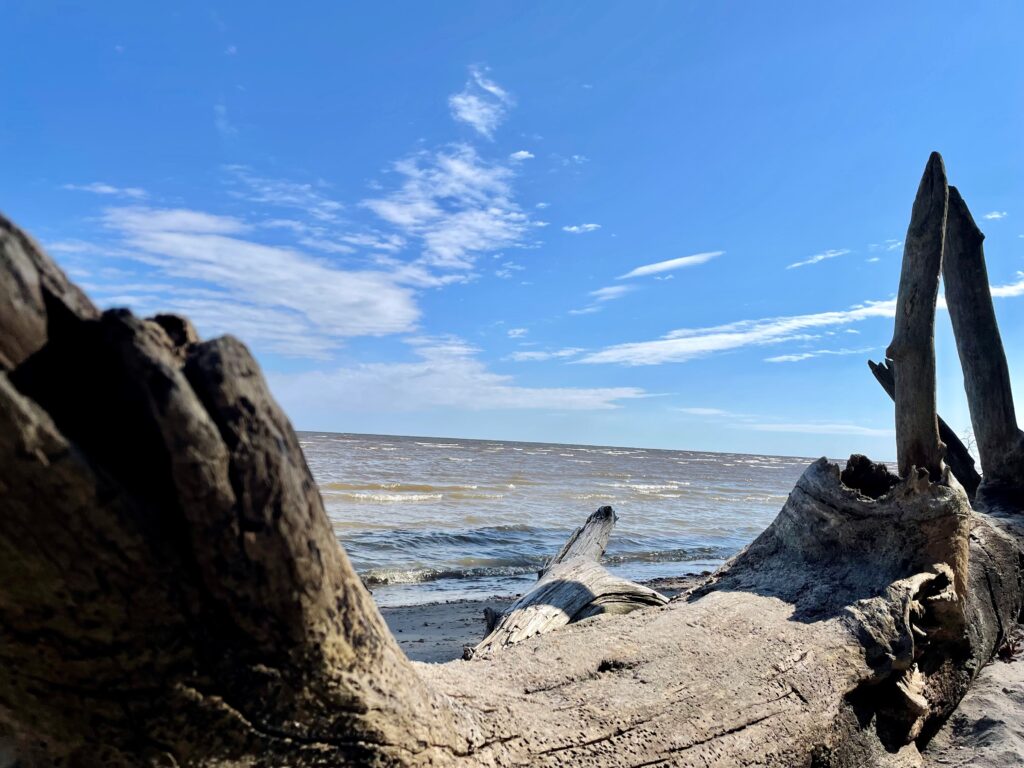A view of the Chesapeake Bay in Calvert County. File photo by Danielle E. Gaines.
There is a fact so indisputable that it stands with the laws of thermodynamics: Marylanders love the Chesapeake Bay. Case in point, we willingly identify with a crustacean, the blue crab, so closely that just its silhouette means Maryland! Our motto might as well be “callinectes sapidus.”
It’s also a fact that the Bay needs a lot more than just love to thrive.
Since the first major wave of colonists settled here hundreds of years ago, humans have drastically impacted the landscape. By the early 19th century, thousands of acres of forest were stripped to make way for tobacco, pasture and lumber. Today, less than 1% of our forests are considered old growth. The scale of deforestation was so massive that it caused the erosion of hundreds of millions of tons of topsoil, burying streams and rivers under feet of sediment.
The ghosts of our ancestors still haunt us today. More than 80% of suspended sediment in our waterways comes from streambank erosion, as flowing water carves channels ever deeper and wider through this unnaturally located sediment. As storms become more frequent and intense under climate change, stream erosion could continue to accelerate for centuries.
That’s the bad news. The good news is that thousands of Marylanders wake up every day and turn their love for the Bay into action. In fact, our tiny state is a world leader in the ecological restoration sector, which employs more than 53,000 Americans nationally.
Those companies, like many in Maryland, tackle projects every day such as constructing living shorelines, planting native plants and wildlife habitat, and building green infrastructure that slows the flow of polluted runoff entering our waterways from our streets, roofs, and parking lots.
Dozens of nonprofit and for-profit businesses employ your neighbors to do this difficult work year-round in all conditions. These are high skill, rewarding careers that cannot be outsourced. The resulting projects bring real, permanent benefits to local communities.
A recent study from Baltimore County shows that stream restorations increase the property value of adjacent homes — a clear economic benefit. Equally important, these projects improve the health of local waterways, increase access to nature, provide better habitat and reduce flooding.
This summer, the University of Maryland’s Center for Environmental Science gave the Chesapeake Bay its highest grade for overall health in 22 years, a C+. While not exemplary, it’s also not a random outcome. This score demonstrates real progress thanks to deliberate intervention. But continued progress is not guaranteed.
The effort to protect and restore the Chesapeake Bay and the rivers and streams that feed it is facing a critical juncture. The last agreement signed by the states in the Bay watershed gave a deadline to have all pollution reduction practices in place by the end of 2025. While we have clearly seen progress, we are behind on meeting many of the agreement’s goals and outcomes.
With the Bay and our rivers and streams so treasured by Marylanders, we need to recommit to the Bay restoration effort and refresh its goals and outcomes. I urge Gov. Wes Moore, the chair of the Chesapeake Executive Council, to lead the governors of the other states in the Bay watershed to make this recommitment.
Sustaining our work to protect and restore our waterways will not only bring all the positive benefits of clean water, but it will also continue to stimulate local economies and support good jobs.
We need to turn our love for the Bay into more action. Backsliding in our focus on restoration is not an option.

